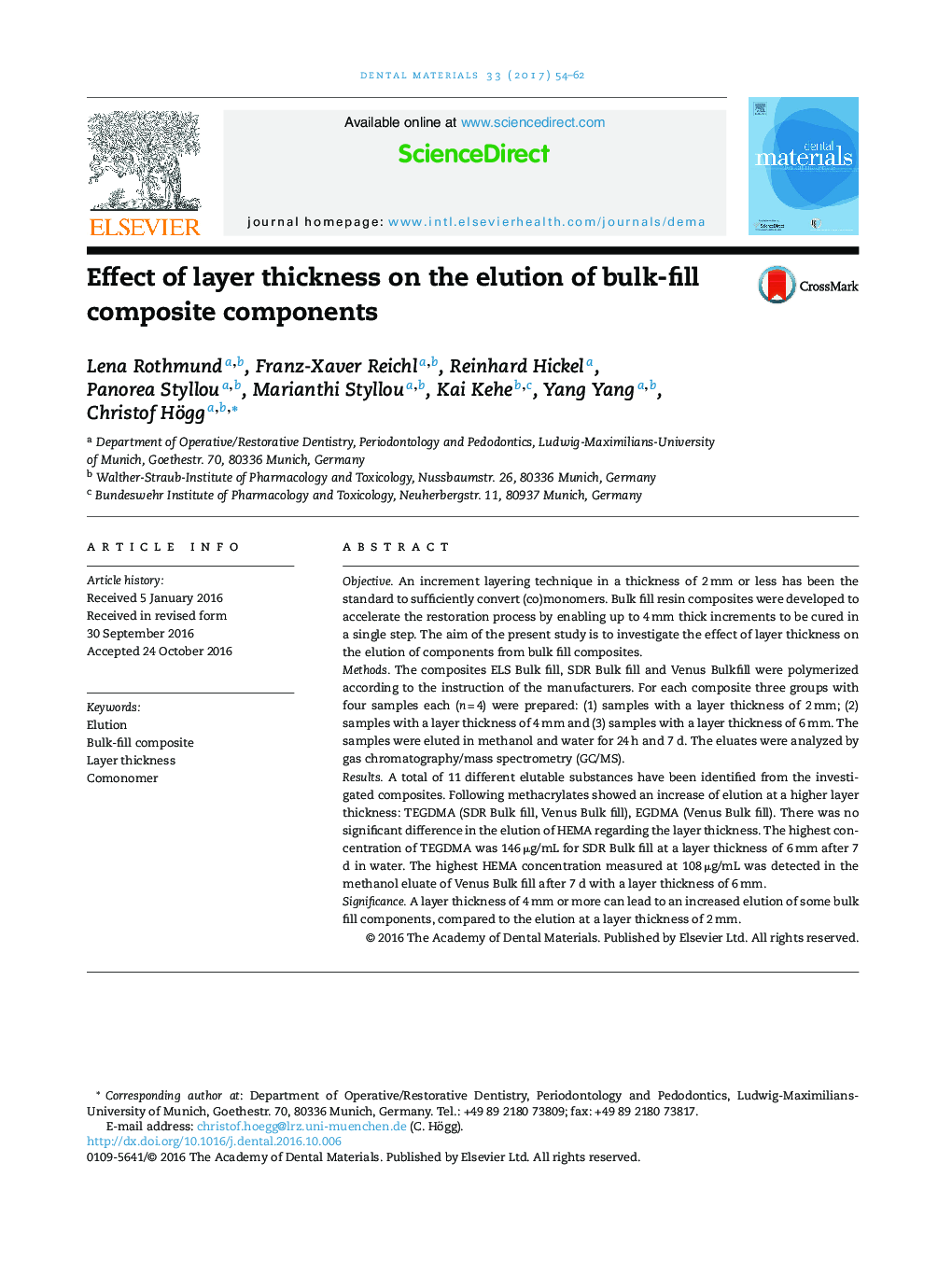| Article ID | Journal | Published Year | Pages | File Type |
|---|---|---|---|---|
| 5433158 | Dental Materials | 2017 | 9 Pages |
ObjectiveAn increment layering technique in a thickness of 2 mm or less has been the standard to sufficiently convert (co)monomers. Bulk fill resin composites were developed to accelerate the restoration process by enabling up to 4 mm thick increments to be cured in a single step. The aim of the present study is to investigate the effect of layer thickness on the elution of components from bulk fill composites.MethodsThe composites ELS Bulk fill, SDR Bulk fill and Venus Bulkfill were polymerized according to the instruction of the manufacturers. For each composite three groups with four samples each (n = 4) were prepared: (1) samples with a layer thickness of 2 mm; (2) samples with a layer thickness of 4 mm and (3) samples with a layer thickness of 6 mm. The samples were eluted in methanol and water for 24 h and 7 d. The eluates were analyzed by gas chromatography/mass spectrometry (GC/MS).ResultsA total of 11 different elutable substances have been identified from the investigated composites. Following methacrylates showed an increase of elution at a higher layer thickness: TEGDMA (SDR Bulk fill, Venus Bulk fill), EGDMA (Venus Bulk fill). There was no significant difference in the elution of HEMA regarding the layer thickness. The highest concentration of TEGDMA was 146 μg/mL for SDR Bulk fill at a layer thickness of 6 mm after 7 d in water. The highest HEMA concentration measured at 108 μg/mL was detected in the methanol eluate of Venus Bulk fill after 7 d with a layer thickness of 6 mm.SignificanceA layer thickness of 4 mm or more can lead to an increased elution of some bulk fill components, compared to the elution at a layer thickness of 2 mm.
